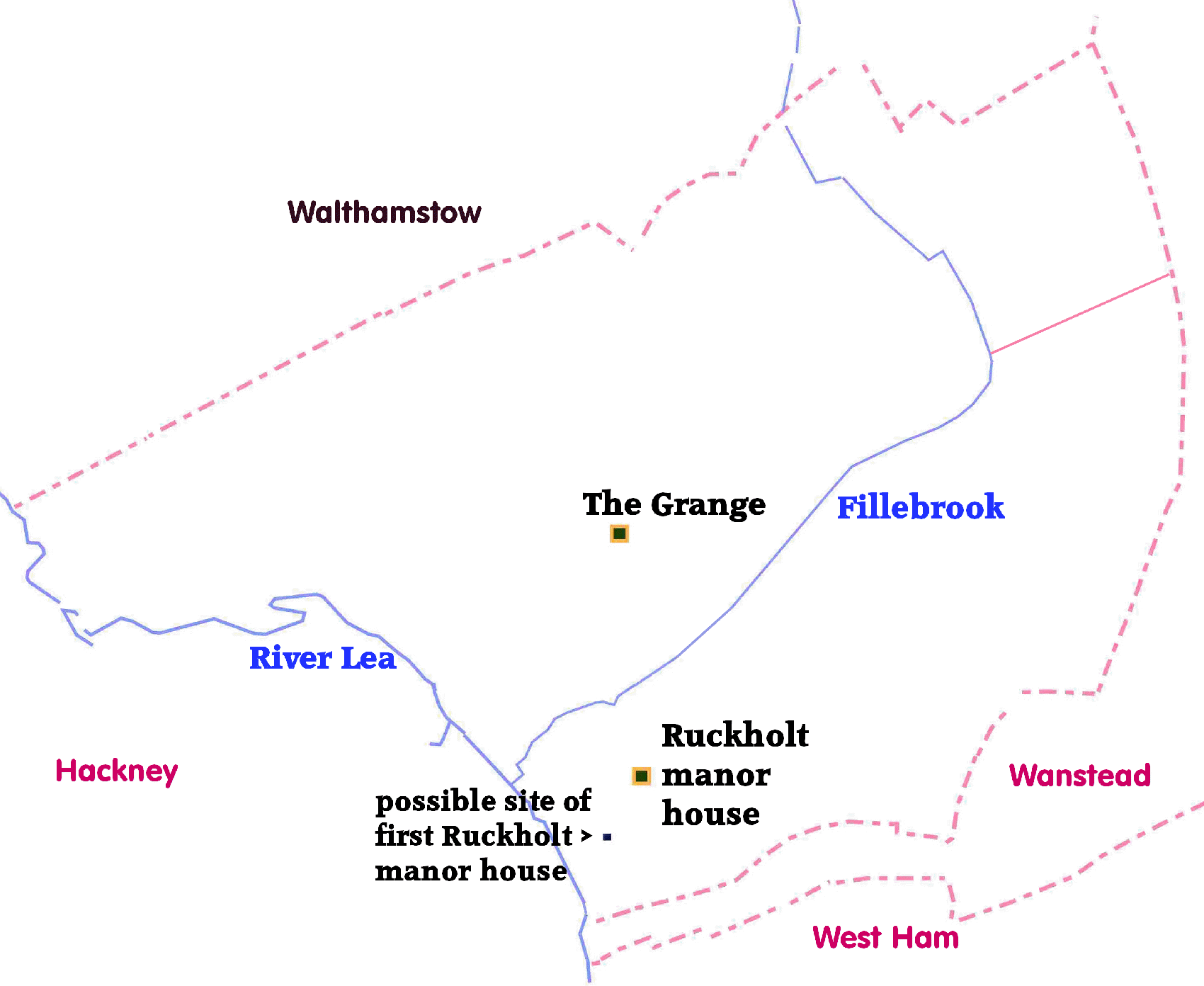. > ...
the history of Leyton and Leytonstone
from . dot to … dots – with plenty of spaces


1066 - 1154, The Norman Conquest to
the death of King Stephen
The Powerful continued
Domesday Book shows the workings of the feudal system in 1086. England had already been divided into the places that survive today, Leyton distinguished from surrounding Hackney, Walthamstow, Wanstead and West Ham. Each place had its parish church, if not in William the Conqueror’s time then a few generations after. The manor houses were on high ground overlooking the Lea Valley and the manorial lands stretched from the River Lea to Epping Forest.
The parish of Leyton, whenever this came into being, contained two manors 1, as did many in Essex, which would have helped the bishop and the rest of the church hierarchy exercise power through the parish church independent of the lords of the manor.
1 At some time the manor of Marks was created straddling the boundary between Leyton and Walthamstow.

diagrammatic map of Leyton showing the Fillebrook dividing the manors of Ruckholt and the Grange
the ‘Walthamstow Slip’ and the manor of Mark are not shown